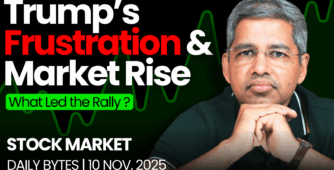Where is the market headed?
The market experienced significant volatility today. The Nifty actually rose and touched the 26,000 mark. However, having been on a continuous upward trend for several days, it succumbed to selling pressures at that high level, giving up virtually all the wonderful gains it had accumulated.
There was no fresh news to really support the market today, and it seems that the Nifty may need some more time near 26,000 before it can actually stage a breakout going forward.
Market Overview
Looking at the charts, we can see that in the last four sessions, the Nifty was moving up very sharply from around 25,300 levels, reaching a top of 26,010 today. It then gave up about 120 points towards the close, settling at 25,879.

Nifty Next 50
The Nifty Junior was also very flat, ending the day at a marginal 0.06% change.

Nifty Mid and Small Cap
Midcaps were down 0.32%, giving up some of the gains made yesterday. Small caps were also down 0.4%, and they have been somewhat slower than the rest of the market, not really participating in the recent upward run.
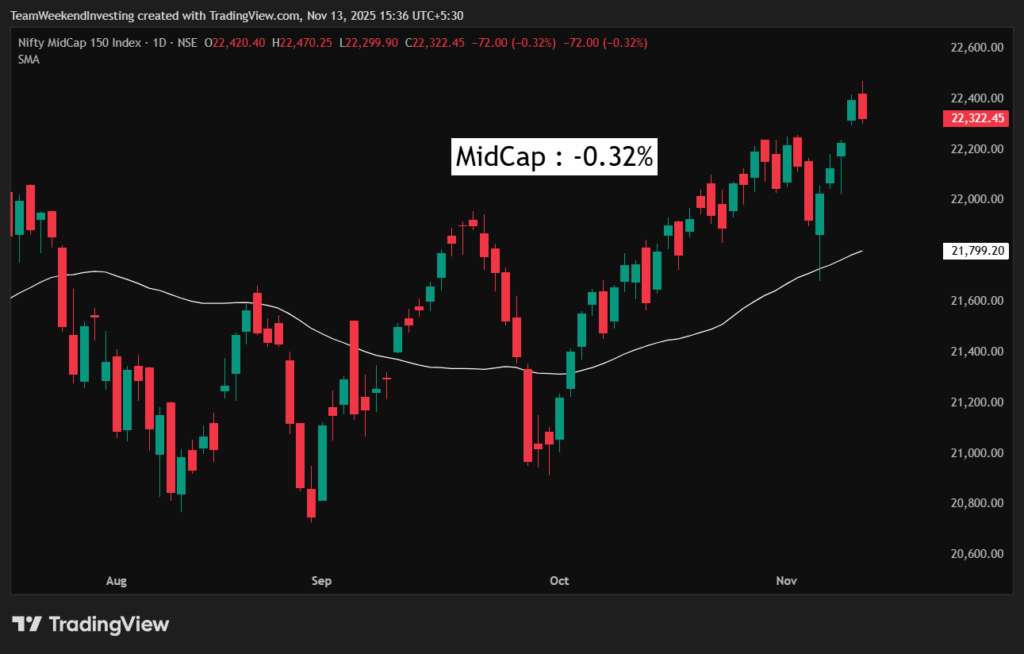
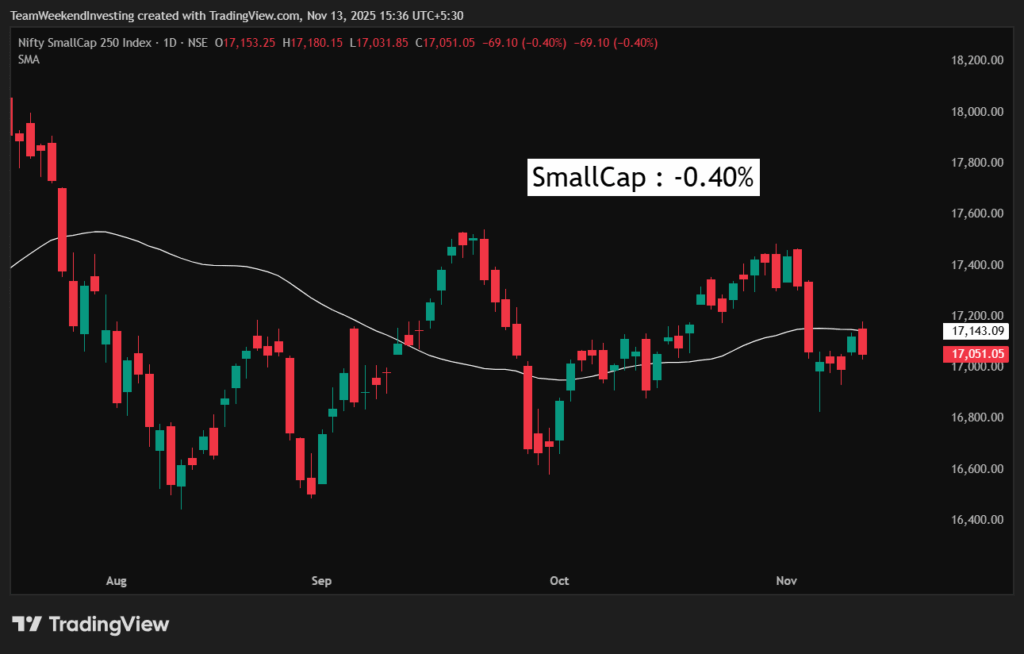
Bank Nifty
The Nifty Bank was up 0.18%, which is not consequential but shows it is still hanging in there near the top.
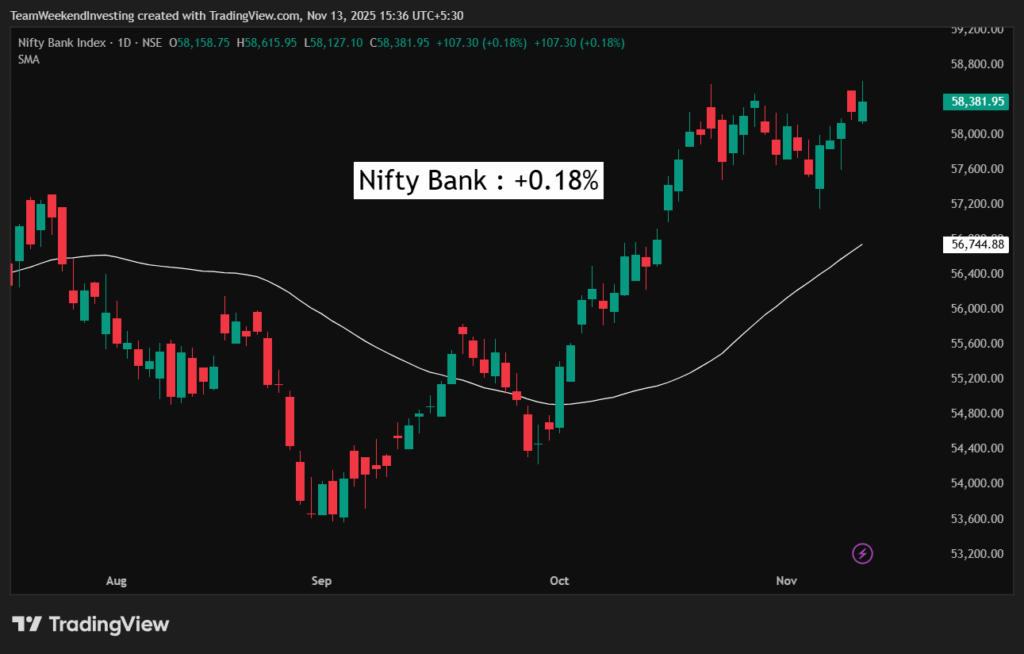
GOLD
Gold is up another 1.02%. As you can see in the chart’s daily candle, gold is now just about 2% away from an all-time high, despite the recent suggestions of a top and a reversal down.

SILVER
Silver is up even more significantly, at 1.86%. The daily chart for silver in rupee terms shows it has actually surpassed its previous high.

Advance Decline Ratio
The advance-decline ratio was reasonably positive in the morning, but post-11 o’clock until the end of the day, the number of advances kept declining while the number of declines kept advancing.

Heat Maps
This was a complete reversal of the market’s internal makeup during the day, which the Nifty Heat Map clearly illustrates. Many stocks were in the green this morning, but by the end, names like Hindalco, TCS, ONGC, Shriram Finance, Bajaj Finance, ITC, BEL, and HDFC all lost ground.
Asian Paints, however, appears to be the new market favorite, closing up 3.96% and hitting a new 52-week high. Power Grid, L&T, Indigo, Bharti Airtel, and Hindalco also posted gains.
In the Nifty Next 50 space, commodities were leading, with Vedanta and Hindustan Zinc both up. Other stocks that performed well included Motherson, Adani, Hyundai, and Divi’s Lab, alongside gains in DLF and LIC. Losers in this segment included Varun Beverages, Mazdock, Solar Industries, PNB, REC, United Spirits, and Naukri.
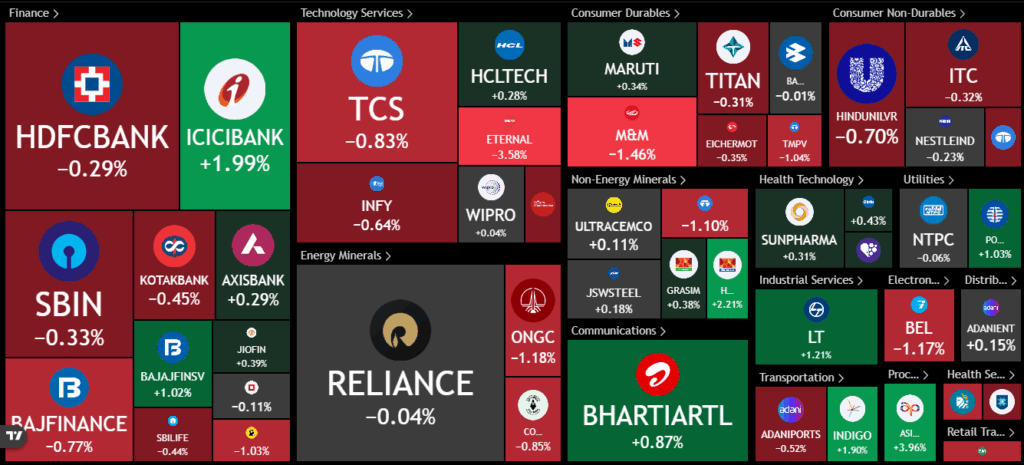
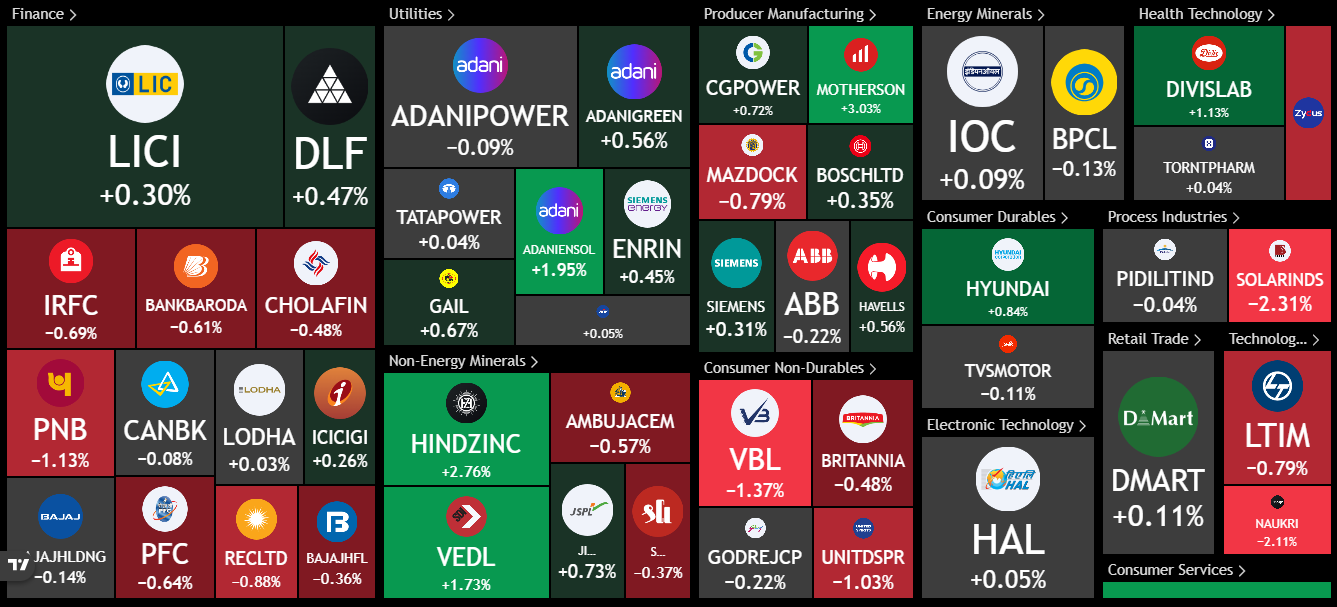
Mover Of The Day
In the Mover of the Day segment, Infibeam shares jumped 8% after its profit surged 51% and revenues hit record highs, with the stock moving 8% higher from its previous levels. The chart shows a huge preceding move that was consolidating, and now the resumption of the upward trend seems to have begun.

Sectoral Overview
Looking at sectoral trends, there was no sector with even a half a percent gain in the highest-gaining category, with Metals, Real Estate, Infrastructure, and Pharma all up 0.4%. On the downside, Media lost 0.55%, CPSEs were down 0.6%, PSU Banks fell 0.7%, and India Defense was down 0.8%, showing significant down moves in some of these sectors.

Sector of the Day
Nifty India Defence Index
Defense stocks, which had been moving very strongly for the last three or four sessions, are now correcting. Specific stocks like Cochin Shipyard fell 4% after its results, and Astra Microwave, Garden Reach Shipping, Solar Industries, and Cyient also lost ground.
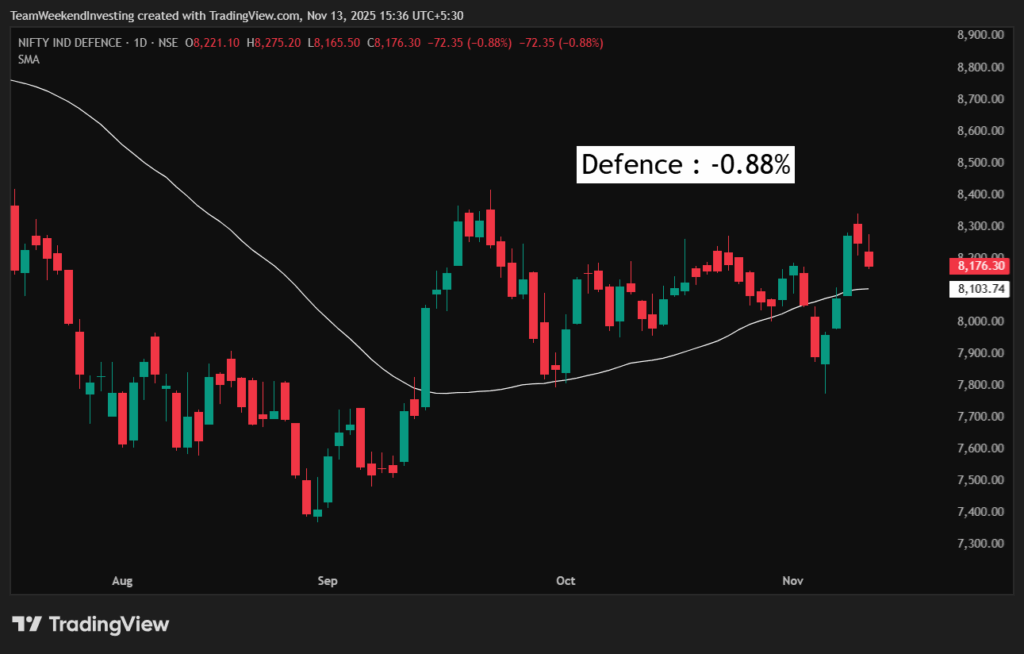

U.S. Market
The US markets in the previous session saw the Dow Jones go up 0.6%, while the S&P 500 and Nasdaq were absolutely flat, at 0% and -0.26% respectively, and the Russell 2000 was down 0.3%. Over the last month, the leading US indices—Nasdaq, Dow Jones, and S&P—have performed well.
However, the broader market, as represented by the Russell 2000, is still in the negative. Over a 12-month period, the broader market has barely moved, up only 3%. The returns in the US market have been primarily driven by a few stocks within the Nasdaq 100 and S&P 500, indicating a very concentrated stock and market capitalization scenario.
Some of the notable gainers yesterday included AMD, which was up 9%, bouncing back strongly after dropping just a few days ago. Other gainers were AbbVie Inc. up 3.5%, UnitedHealth, Goldman Sachs, and Cisco, with Cisco rising 3% for the day.
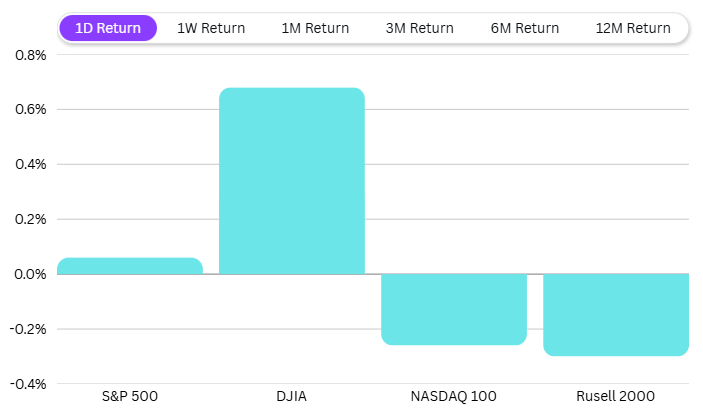

Tweet Of The Day
The Tweet of the Day focuses on Ray Dalio, who has been very vocal about money debasement—the continuous printing of money out of thin air without any backing. Dalio nicely explains that every few decades, governments engage in reckless overspending to fulfill entitlements, which necessitates continuously printing money. This continuous money printing causes money debasement, leading other asset classes to rise as the value of money crashes.
This very important concept was seen in the 1930s and 1970s. Whenever massive debasement happens, all asset classes—including stock markets, real estate, gold, and other collectibles—will go up because the value of the underlying currency is falling. This means that typical valuation metrics like the Price-to-Earnings ratio and absolute valuation often take a backseat during such events.
What was considered a great valuation multiple 20 years ago, like a P/E of 10 or 15, is now seen as acceptable at 45 or 50 because everyone is looking at relative valuation, not absolute valuation. This debasement causes money to shift from one asset to another based on what looks more expensive versus the other, instead of individual stock valuation.
Comparing a stock like Nvidia’s $5 trillion valuation versus other stocks in the marketplace, other collectibles, other real estate assets, or gold versus the money supply—these are the ratios that make sense now. Since we haven’t experienced this kind of debasement since the 1970s, most market experts have not lived through it or don’t have a clear understanding of it, simply assuming that the trends of the last 30 or 40 years will continue. This is described as being an “ostrich with your head in the sand,” and the concept needs to be understood very carefully.

On a separate note, Michael Burry, the “Big Short” guy famous for shorting markets, appears to be shutting down his asset management company, although this is speculative and it is unclear if the money is moving to another AMC or being returned. In a letter, he mentions liquidating the fund and returning capital “with a heavy heart,” suggesting things may have gone sour.
This is relevant to the previous discussion, as shorting the markets based on the concept of being overvalued may no longer hold true when the concept of overvaluation itself has been thrown out the window, at least as far as I am concerned, though I acknowledge I could be completely wrong. Ultimately, the markets will decide where they want to move, and standing in front of the market’s trend, whether up or down, will likely result in being crushed.





